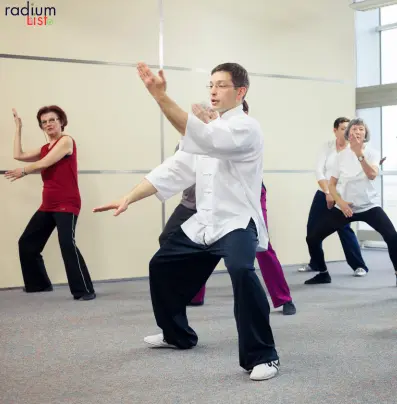Optimize Your Gym Routine: 10 Fitness Training Types
Pursuing a fitness journey is more than just sticking to a traditional gym routine. It is personalized adventure that involves exploring various fitness training methods tailored to your unique goals and preferences. This journey take you on a different path where each type of exercise add a fresh twists to your routine, making it more interesting and effective, by exploring this vast landscape of fitness training, you can create a workout routine that not only helps you achieve your fitness objectives but also keeps you motivated and engaged.
Optimize Your Gym Routine: 10 Fitness Training Types
Strength Training: Building the Foundation
Strength training often leads us to the allure of advanced exercises and intricate programs. However, a fundamental aspect that's often overlooked is the significance of laying a robust foundation in strength through mastering the basics.
Cardiovascular Training: Boosting Endurance
Cardiovascular exercise often referred to as aerobic or endurance exercise, constitutes any activity engaging aerobic metabolism. This means oxygen plays a pivotal role in the cellular reactions fueling the energy required for sustained activity. As your heart rate escalates, and breaths deepen, oxygen saturation in your blood intensifies
Strength Training: Building the Foundation
Strength training often leads us to the allure of advanced exercises and intricate programs. However, a fundamental aspect that’s often overlooked is the significance of laying a robust foundation in strength through mastering the basics.
In strength-building, it’s crucial to grasp that the core essence lies in enhancing movements. Movement is the linchpin here. Without establishing a solid base in movement, delving into advanced exercises or programs can prove counterproductive, leading to a plateau in progress or, in more severe cases, injury.
The bedrock of strength development is intricately tied to movement. This underscores the importance of prioritizing movement and mobility before plunging headlong into complex training regimens. Rushing the process can undermine the potential for sustainable progress.
Understanding the symbiotic relationship between movement and strength is pivotal. Every robust structure is built on a well-laid foundation, and the human body is no exception. Focusing on movement patterns not only mitigates the risk of injuries but also ensures a smoother trajectory towards achieving strength goals.
Cardiovascular Training: Boosting Endurance
Cardiovascular exercise often referred to as aerobic or endurance exercise, constitutes any activity engaging aerobic metabolism. This means oxygen plays a pivotal role in the cellular reactions fueling the energy required for sustained activity. As your heart rate escalates, and breaths deepen, oxygen saturation in your blood intensifies, promoting efficient oxygen utilization, resulting in heightened energy levels and reduced fatigue.
The essence of cardiovascular exercise lies in vigorous activities that boost heart rate, respiration, and overall oxygen and blood flow. By repetitively and rhythmically engaging large muscle groups, this form of exercise progressively challenges vital internal organs, enhancing the performance of the heart, lungs, and circulatory system. The benefits extend to heart health, mental well-being, mood elevation, improved sleep, weight regulation, and metabolism.
Through cardiovascular exercise, the heart, lungs, and muscles become more adept at their functions, promoting efficiency with every beat. However, it’s crucial to strike a balance – while the breathing and heart rate increase, it shouldn’t reach a point where it induces an urgent need to stop and rest. Activities like speed walking, cycling, swimming, running, or speed climbing fall under the cardio umbrella, but if unusual pain or alarming symptoms arise, immediate cessation and medical attention are paramount.
For an activity to qualify as cardio, it must elevate heart and breathing rates to a moderate to vigorous intensity level for at least 10 minutes, reaching at least 50% of the normal rate. It’s essential to recognize that exercises enhancing strength, like resistance training, weightlifting, or core workouts, don’t fall into the cardio category, as they don’t sustain an increased heart rate throughout the entire session.
Flexibility and Mobility: Yoga and Pilates
Boosting flexibility is a multifaceted journey, while Yoga and Pilates stand as celebrated avenues, addressing the root causes of flexibility challenges is equally crucial. These practices are renowned for their ability to enhance suppleness but if difficulty touching your toes stems from issues like Nerves, Postural Misalignment or Muscular Weakness a broader approach is essential.
Incorporating Yoga & Pilates into your routine is undeniably beneficial. Yoga with its diverse poses and deliberate stretches promotes flexibility while fostering mental calmness. Pilates focusing on core strength and controlled movements, complements flexibility gains with enhanced muscle tone and overall body awareness. However, relying solely on these practices may not address specific hindrances preventing you from reaching your toes.
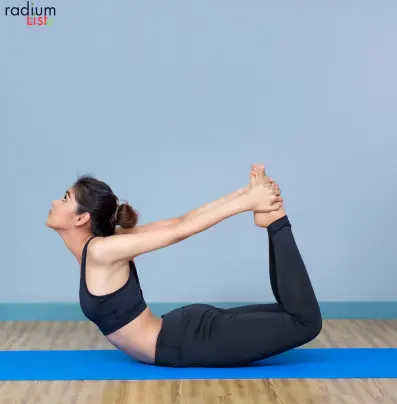
Exploring the intricacies of flexibility involves identifying individual barriers. Nervousness can tighten muscles inhibiting movement. Postural challenges, often a result of prolonged desk work impact the spine’s alignment, affecting your ability to bend comfortably. Muscle weakness is a common issue that necessitates targeted exercises to strengthen and lengthen specific muscle groups.
Consider a holistic approach to flexibility. Supplement your Yoga and Pilates sessions with exercises targeting nerves, posture, and muscle groups contributing to your flexibility goals. Gentle nerve gliding exercises, posture-improving stretches, and targeted muscle strengthening routines can create a comprehensive flexibility regimen.
Remember, flexibility is a personalized journey. Tailor your approach to address the unique factors limiting your range of motion, ensuring that your quest for flexibility is not confined to specific exercises but embraces a holistic perspective on overall well-being.
Functional Training: Real-World Fitness
Functional fitness training stands as a dynamic approach to exercise, emphasizing movements that mirror real-world activities. Beyond conventional workouts, it dives into functional movements like squats, deadlifts, leg extensions, cardio training, and push-ups, offering a holistic fitness experience.
At its core, functional fitness revolves around exercises that mimic daily life actions. Squats resembling the motion of sitting and standing and deadlifts, akin to lifting objects from the ground form the foundation. Engaging in these movements not only builds strength but also enhances mobility and flexibility, essential elements for navigating the challenges of everyday life.
Leg extensions are a key component of functional fitness, target specific muscle groups contributing to overall lower body strength. This exercise goes beyond traditional strength training focusing on functional outcomes like improved walking, climbing stairs and maintaining balance.
Cardiovascular training, another integral aspect, elevates the heart rate and enhances endurance. Functional fitness recognizes the importance of Cardiovascular health in real-world scenarios ensuring that the body can sustain activities requiring increased Oxygen and blood flow.
Push-ups, a timeless exercise, epitomise upper body strength and core engagement. Their functional relevance extends to activities like pushing objects or rising from a horizontal position, aligning with the principles of functional fitness.
Embracing functional fitness not only reduces the risk of injury by preparing the body for diverse movements but also fosters more resilient and adaptable physique. By incorporating these exercises into your routine not only you can build strength but also cultivate a body that seamlessly meets the demands of daily life promoting and longevity.
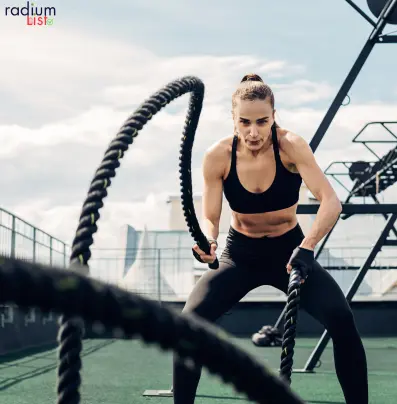
CrossFit: Varied and Intense Workouts
CrossFit becomes a fitness craze, providing a high-intensity exercise program that is very variable. Adapted to get people ready for a range of physical obstacles Weightlifting, aerobic exercise, and gymnastics are all combined into one potent and dynamic workout program called CrossFit.
Workouts led by qualified CrossFit coaches are dynamic and adaptable to suit the needs of people at all fitness levels. CrossFit stands out as it is unpredictable, every session offers a fresh set of obstacles to overcome, preparing practitioners for anything life may throw at them. CrossFit aims to develop adaptability and toughness with exercises like sprints, pull-ups and heavy barbell lifts.
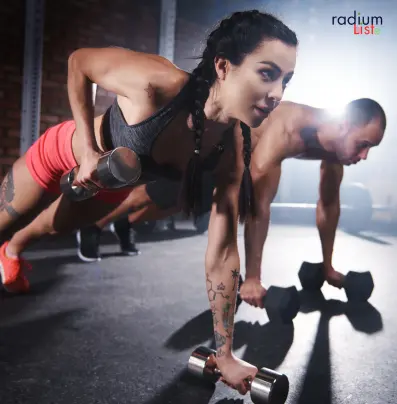
Operating as a franchise with independently owned affiliates, CrossFit facilities, affectionately known as “boxes,” adhere to the same methodology. The workouts are characterized by high intensity and competitiveness, often focusing on completing exercises as rapidly as possible or achieving the maximum number of repetitions in a given timeframe.
A typical CrossFit session, lasting about an hour, follows a structured format. After giving a briefing on the Workout of the Day( WOD), the trainer leads warm-up exercises which incorporate strength or skill practice and performs an exertion exercise at the ends or cool-down exercises.
CrossFit’s community- centric approach fosters a sense of belonging and support, elevating it beyond a bare fitness authority to a life. The community within CrossFit boxes creates a unique environment where individuals push their limits together.
Bodyweight Training: No Equipment, No Excuses
Bodyweight exercises are simple yet highly effective, offer a pathway to enhance balance flexibility and strength—all within the comfort of your home. This form of exercise utilizes your body’s weight to create resistance, fostering improvements in strength, flexibility, endurance and coordination.
The allure of bodyweight workouts lies in their efficiency. Short sessions can yield impressive results, seamlessly integrating into your routine and complementing other exercise forms. A unique blend of strength and cardio, these workouts keep your heart pumping while sculpting muscles and enhancing flexibility. What sets bodyweight exercises apart is their remarkable ability to burn fat, with the metabolic benefits lingering long after the workout concludes.
The versatility of bodyweight exercises adds a refreshing dimension to your fitness routine. No need to navigate between gym machines or worry about limitations based on your fitness level. The dynamic nature of these workouts ensures that boredom is kept at bay, as the challenge remains constant.
Perhaps one of the most effective aspects of bodyweight exercises is the sheer attainability — they can be performed wherever and whenever. No gym class or elaborate outfit is needed; all you need is a bit of space to move around. In the words of Shakira, it’s a case of “Whenever. Wherever.”
Costing nothing but your commitment, bodyweight exercises stand out as a budget-friendly fitness option.The simplicity of these exercises belies their effectiveness they involve composite movements engaging multiple joints and muscles with each repetition. From push- ups to lunges, bodyweight exercises promise not just convenience but noticeable results, making them a root of any fitness enthusiast’s rule.
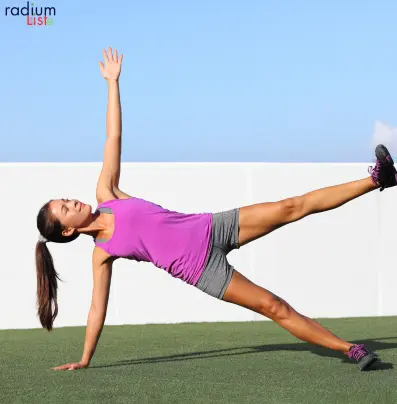
Powerlifting: Showcasing Raw Strength
Powerlifting stands as a revered sport, a symphony composed of raw, unfiltered strength and unparalleled determination. At its core, powerlifting transcends mere athleticism. It’s an art that intertwines physical prowess with mental fortitude creating a canvas where raw strength takes center stage.
This sport is a manifestation of human eventuality, synopsizing three primary lifts: the squat, bench press and deadlift. Each lift is a testament to the lifter’s unvarying dedication and unyielding will to conquer monumental weights. Powerlifting isn’t just about the sheer magnitude of weight lifted, it’s about delving into the depths of one’s capabilities pushing beyond limits and showcasing the ingrained strength that resides within.
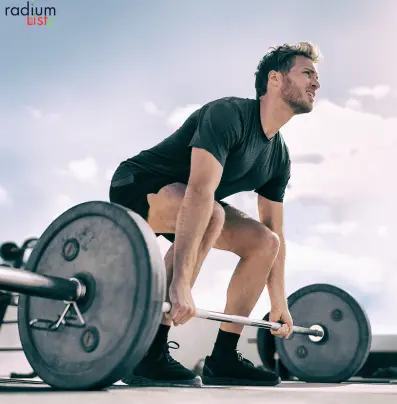
The essence of powerlifting resides in the primal unadulterated display of strength. It’s a symphony where athletes become storytellers, each lift narrating a saga of determination, discipline, and resilience. Technique and form are the artist’s brushstrokes, finely tuning the craft of lifting colossal loads with precision and finesse.
What sets powerlifting apart is its purity; it’s a domain where the only opponent is oneself. The competition isn’t against external forces; it’s an internal dialogue of surpassing personal records, defying odds, and unleashing potential. Every lift resonates with the echoes of perseverance and dedication, sculpting not just physical strength but mental fortitude.
Powerlifting transcends the extents of mere physicality, it’s a philosophy that celebrates adaptability, discipline and the relentless pursuit of excellence. It’s a stage where every lifter, regardless of background or experience, becomes a legionary, etching their insuperable spirit onto the fabric of strength sports.
Martial Arts-Based Workouts: Fitness with a Purpose
Martial arts- based exercises transcend conventional fitness routines, embodying as a core discipline tenet. embedded in centuries-old traditions these exercises fuse physical exertion with internal focus, paving the way for a holistic approach to well- being.
Unlike repetitive exercises, martial arts exercises emphasize perfection in movement. From calculated strikes to choreographed katas, each move serves a purpose, edging not only physical prowess but also collaboration and dexterity.
At the heart of martial arts- based fitness lies a profound mind- body connection. The fluidity of movements, synchronized with controlled breathing, creates a harmonious union, fostering mental clarity and heightened mindfulness.
Martial arts exercises review functional fitness by incorporating practical self- defence techniques. Beyond sculpting muscles, interpreters develop skills that extend beyond the training mat, enhancing their ability to navigate real- world scenarios.
These exercises pay homage to different martial arts traditions, enacting a sense of artistic reverence. Whether it’s the disciplined stations of karate or the flowing grace of tai chi, each practice carries the rich heritage of its origin.
further than just a physical endeavour, martial arts- based fitness becomes a trip of commission. It cultivates adaptability, instills confidence, and provides a platform for continual self- discovery.
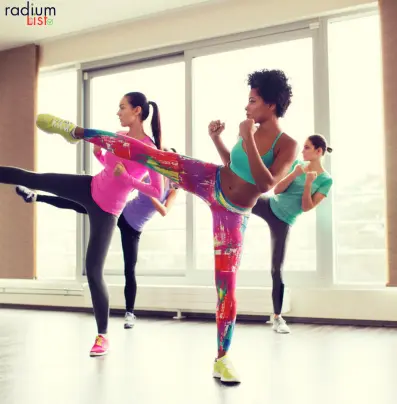
Endurance Training: Going the Distance
In the hunt for physical excellence, endurance training emerges as a foundation, seeking to amplify the body’s capacity for sustained physical exertion. This holistic approach focuses on enriching the cardiovascular system — comprising the heart, lungs, and blood vessels eventually fortifying the body to conquer extended ages of exertion.
At its core, endurance training aspires to unleash the body’s eventuality to endure prolonged physical challenges. By orchestrating a symphony of acclimations within the cardiovascular system, enhancing their capability to” go the distance” in colourful physical hobbies.

Endurance training is a nuanced dance between aerobic and anaerobic exercises. Aerobic conditioning, propelled by oxygen-dependent energy products, form the foundation for erecting cardiovascular effectiveness. contemporaneously, anaerobic exercises, fueled by energy products without oxygen, fit bursts of intensity, contributing to a comprehensive abidance force.
Central to abidance training is the mastery of the cardiovascular system. The heart evolves into an effective pump, propelling oxygen-rich blood through intricate networks of vessels, while the lungs optimize oxygen input. The harmonious community of these factors lays the root for heightened abidance and adaptability.
This narrative transcends the traditional view of exercise; it encapsulates a gospel that extends beyond physical limits. Abidance training becomes a conceit for life and personification of perseverance, adaptability, and the unvarying commitment to push boundaries, both in fitness hobbies and the broader diapason of particular growth.
Mind-Body Connection: Tai Chi and Qigong
Rooted in ancient wisdom, Tai Chi and Qigong stand as venerable mind-body practices, weaving a tapestry that harmonizes energy within the realms of body, mind, and spirit. Within the expansive landscape of Qigong, Tai Chi emerges as a distinguished variation, offering a holistic journey towards mental clarity, controlled breathing, and profound relaxation.
Qigong unfolds in myriad variations, each encapsulating the essence of energy cultivation. Tai Chi gracefully dances within this diverse choreography, presenting a unique blend of postures and gentle movements. The practice is an intricate fusion of physical and mental elements, encapsulating a meditative flow that transcends the boundaries of conventional exercise.
Tai Chi and Qigong transcend the conventional paradigms of physical activity. Instead, they unfurl as moving meditations, where deliberate postures and fluid movements synchronize with controlled breathing. This amalgamation not only fosters physical well-being but becomes a conduit for nurturing mental focus and spiritual tranquility.
The crux of these practices lies in the alchemy of energy—Qi. Tai Chi and Qigong channel the vital life force, fostering a harmonious circulation that permeates every sinew and thought. The gentle undulations of Tai Chi become a kinetic poetry, an embodiment of the intricate dance between Yin and Yang within the practitioner.
